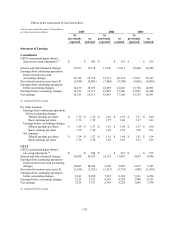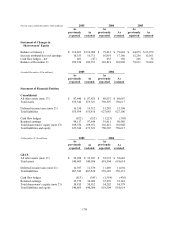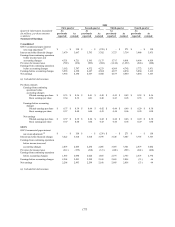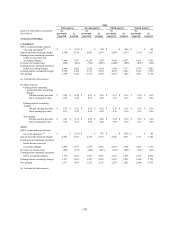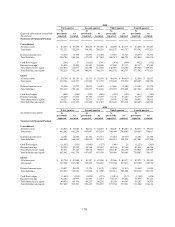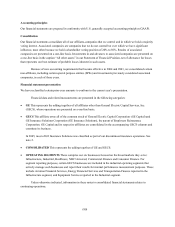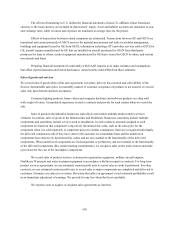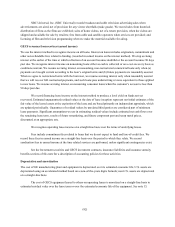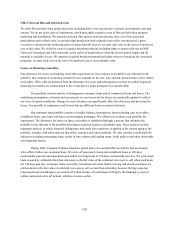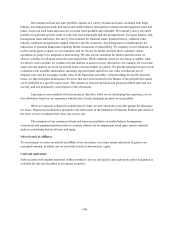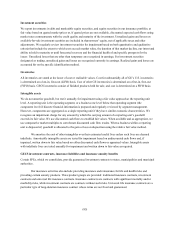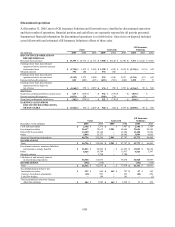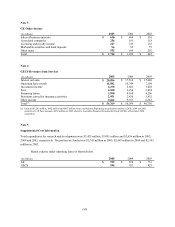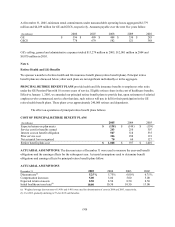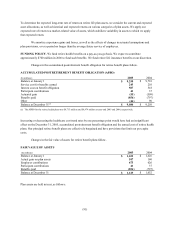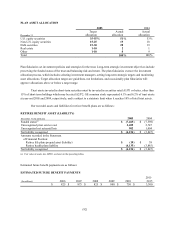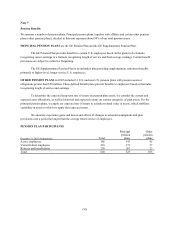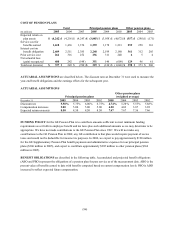GE 2005 Annual Report Download - page 84
Download and view the complete annual report
Please find page 84 of the 2005 GE annual report below. You can navigate through the pages in the report by either clicking on the pages listed below, or by using the keyword search tool below to find specific information within the annual report.(84)
Our commercial loan and lease portfolio consists of a variety of loans and leases, including both larger
balance, non-homogenous loans and leases and smaller balance homogenous commercial and equipment loans and
leases. Losses on such loans and leases are recorded when probable and estimable. We routinely survey our entire
portfolio for potential specific credit or collection issues that might indicate an impairment. For larger balance, non-
homogenous loans and leases, this survey first considers the financial status, payment history, collateral value,
industry conditions and guarantor support related to specific customers. Any delinquencies or bankruptcies are
indications of potential impairment requiring further assessment of collectibility. We routinely receive financial, as
well as rating agency reports, on our customers, and we elevate for further attention those customers whose
operations we judge to be marginal or deteriorating. We also elevate customers for further attention when we
observe a decline in collateral values for asset-based loans. While collateral values are not always available, when
we observe such a decline, we evaluate relevant markets to assess recovery alternatives- for example, for real estate
loans, relevant markets are local; for aircraft loans, relevant markets are global. We provide allowances based on our
evaluation of all available information, including expected future cash flows, fair value of collateral, net of
disposal costs, and the secondary market value of the financing receivables. After providing for specific incurred
losses, we then determine an allowance for losses that have been incurred in the balance of the portfolio but cannot
yet be identified to a specific loan or lease. This estimate is based on historical and projected default rates and loss
severity, and it is prepared by each respective line of business.
Experience is not available with new products; therefore, while we are developing that experience, we set
loss allowances based on our experience with the most closely analogous products in our portfolio.
When we repossess collateral in satisfaction of a loan, we write down the receivable against the allowance
for losses. Repossessed collateral is included in All other assets in the Statement of Financial Position and carried at
the lower of cost or estimated fair value less costs to sell.
The remainder of our commercial loans and leases are portfolios of smaller balance homogenous
commercial and equipment positions that we evaluate collectively for impairment based upon various statistical
analyses considering historical losses and aging.
Sales of stock by affiliates
We record gains or losses on sales by an affiliate of its own shares as revenue unless realization of gains is not
reasonably assured, in which case we record the results in shareowners’ equity.
Cash and equivalents
Debt securities with original maturities of three months or less are included in cash equivalents unless designated as
available-for-sale and classified as investment securities.



